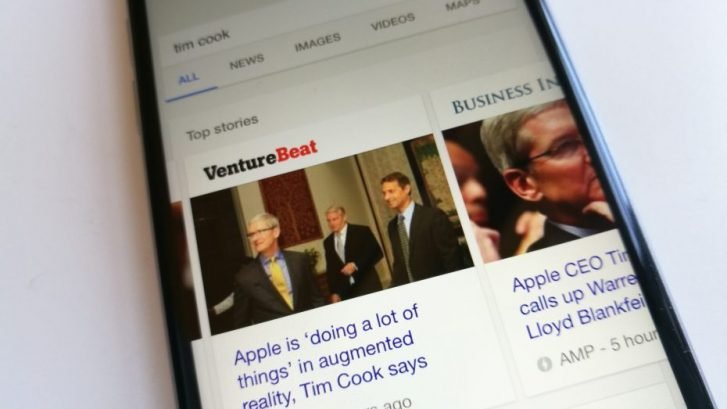In the past year, Google and Facebook have deployed technology that makes media articles load faster on mobile devices — the former uses Accelerated Mobile Pages (AMP) to do this, and the latter relies on Instant Articles. AMP pages and Instant Articles rely on a similar symbol — a lightning bolt in a circle — to stand out from other pages that you can select and explore.
Both show text, images, and videos quickly — it’s not as if one of them is much speedier than the other.
But when you go beyond what these technologies have in common and start using them more, you’ll begin to see how they’re different. And, at least for now, I personally like one more than the other. Here’s why.
AMP is open-source
Independent developers can inspect the underlying code of AMP and build things on top of it or even incorporate the code into their own software. You can see every little change to the project, and you can see contributions from non-Googlers. With Instant Articles, we’re only left to assume that Facebook developers are building it and no one else.
AMP is getting deployed across more web content, even ads
In the not-too-distant future, ads will pop up faster, meaning that entire pages will be fully loaded more quickly. Ecommerce content could come up faster. And, generally speaking, now all webmasters can start making their webpages into AMP pages. Facebook’s technology, at least so far, is limited to Facebook (and wherever Facebook users share Instant Article URLs).
AMP has more sharing options
When you’re reading Instant Articles, you’re primarily being prodded to share something back to Facebook, even if that wasn’t necessarily what you planned to do when you hit the share button.
On iOS, the first two options are Facebook-centric: share to friends now or share in a new post. The third option is to send to Messenger — a Facebook instant messaging app. The fourth option, Save for Later, drops the article into your Facebook account’s Saved collection, instead of something like Instapaper or Pocket or Pinterest, even if they’re already installed on your device. You can copy the link, open it in Safari, or share it via Twitter, but those are the last options that Facebook displays. (On Android, the sharing options are nearly the same, although, strangely, Facebook lets you share the article to Pinterest instead of Twitter.)
Google AMP, by contrast, gives you iOS’ standard share sheet, which you can always add to and subtract from. The usual sharing options also come up on Android — after all, an AMP is really just a webpage. So you can do things like read in Reader View, add the article to your home screen, request the desktop site, print the article, or bookmark it. It’s not impossible to do those things with Instant Articles — just more complicated.
Even when you highlight text in an Instant Article, Facebook shows you a big old share button alongside a copy button. And near the top of the Instant Article, next to the publisher’s name, you’ll see a like button. These are distractions from the organic reading experience that are meant to contribute back to Facebook. Google’s AMP pages are not as obviously self-serving.
AMP pages can be shown in a carousel that lets you easily switch articles
If you’re done reading an AMP article about a certain topic, and you’re ready to learn more, well, you’re in luck, because Google loads up AMP articles about similar subjects — with the “Top Stories” widget in Google Search, the Google app for iOS, and in other places — in a “carousel.” Each dot in a row near the top of the display represents the available pages in the carousel, and as you swipe left or right, the AMP page changes, and the highlighted dot moves accordingly. This is accommodating to curious readers; there’s no need to hunt all around the internet when you’re looking for a little more detail. Currently, Facebook’s Instant Articles have nothing like this.
AMP is under constant development
That said, Instant Articles do have a couple of advantages over AMP pages: They can incorporate comments, and they don’t currently support paywalls, meaning that you can freely hop from an Instant Article from a usually paywalled publisher like the New York Times. But the good thing is, Google and its collaborators are constantly rolling out changes to AMP, while Facebook has not made many announcements about updates to Instant Articles. So it’s conceivable that Google will catch up in the areas where AMP is behind.
So for us, we prefer to work with AMP cause Google made it the way we want

